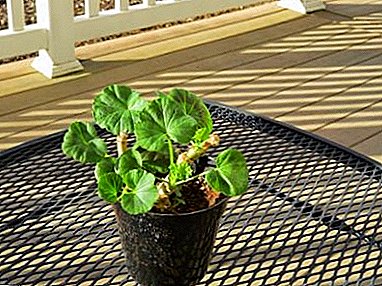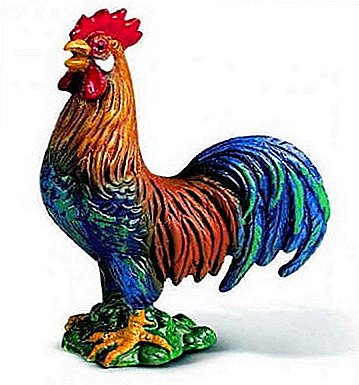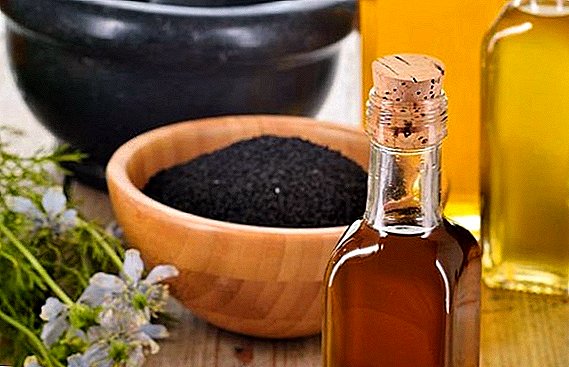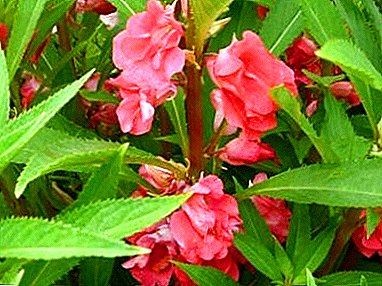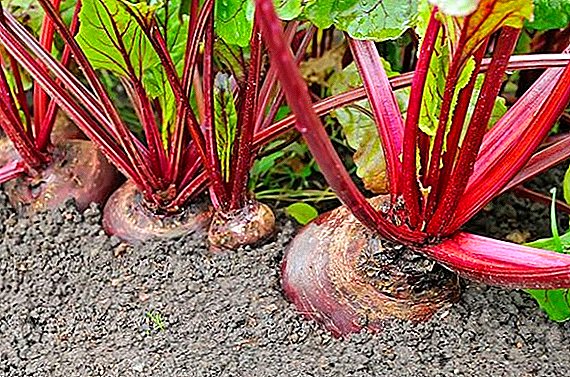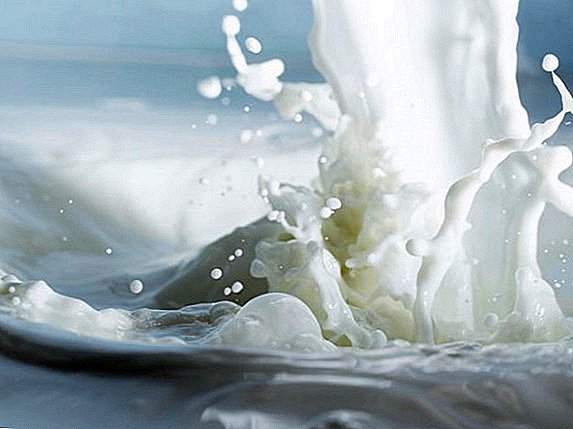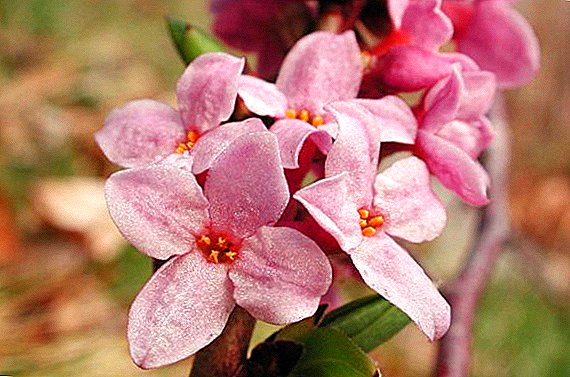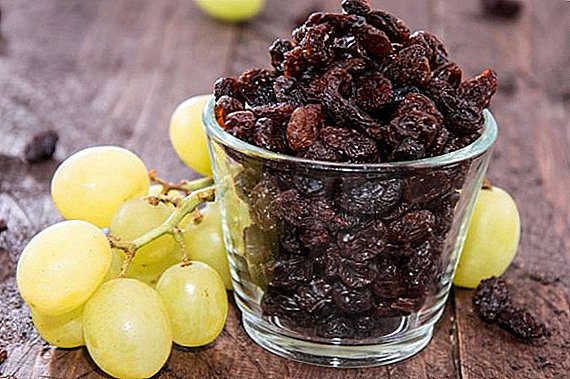
Almost on all the garden plots of the country one can find several bushes of the most different currants - white, black or red.
These berries have long been used by housewives to make jam, stewed fruit, and people freeze these small balls, thanks to which in the middle of winter you can remember the taste of summer.
Currant in itself is not very fastidious plant. But still the bushes should be taken care of in time to get a lot of berries.
If you are planning to try yourself in the cultivation of currants, then one of the first and key points will be the choice of variety.
The most famous and, at the same time, the best varieties of currants are listed below.
Variety "Black Pearl"

It is one of the most popular varieties of dessert currants. He conquered the market thanks to its high appearance and taste.
Often the bushes of this currant are confused with gooseberries or with blueberries, but, in fact, this plant is representative of one of the most mysterious types of currants - golden.
The bush itself is externally similar to the gooseberry bush, grows strictly vertically, with little branching. Shoots bend with growth, mild.
The leaves also resemble gooseberry leaflets - the leaf plate has 2 - 3 pointed blades. The term of ripening in this variety is average in duration, fruiting begins in early June.
Large fruits, weight can vary from 1.5 g to 6 g! To taste, the fruits of the Black Pearl are similar to blueberries, but there are also sweet and sour notes that are typical of currants.
Fruiting begins 1.5 - 2 years after dropping seedlings. From one plant you can collect an average of 3.5 to 4.5 kg of ripe berries, which is an excellent indicator.
Typical for golden currant is resistance, and to many bad external factors.
Bushes "Black Pearl" able to withstand the fall in temperature, and the lack of water in the soil, and even diseases and pests.
Even a kidney mite can not badly harm these bushes, and in fact against it any treatment is meaningless. This variety was selected in the Siberian latitudes, so even the most severe winters with their frosts down to -39 C will not be able to cause much harm to these plants. Also, this currant is immune to powdery mildew.
Before you buy seedlings need to be well inspected for defects in the root system or shoots. The roots must be well developed, have no mechanical damage, and also reach 25 cm in length.
If the root system appears to be overdried, then 2–3 days before the intended planting, the seedling needs to be soaked in water, where you can add a small amount of growth stimulants.
Better before landing dip the roots in the clay talker. Planting scheme - 50x50x50 cm. Immediately after planting, each seedling needs to be watered, and the ground around the shoots to be covered with mulch. Drop in seedlings can be both in early spring and early autumn.
In order for the currants to have enough moisture, it is advisable to make water-recharge irrigations that will provide the roots with a sufficient amount of water for a long time. The water must be warm, you can even install devices for drip irrigation, which will automatically deliver water to the bushes.
It is also important to loosen the soil so that oxygen evenly reaches the roots. It is necessary to carefully carry out this procedure in order not to hurt the roots close to the surface.
It is also desirable to regularly cover the soil with an organic mule, which will simultaneously feed the bushes. The “Black Pearl” bushes are often not needed for treatment against diseases, but it is possible to spray as appropriate prophylaxis with appropriate preparations.
Variety "Venus"

The representative of black currant. He was bred by ASIlinin in the South Ural Scientific Research Institute for Horticulture and Potato.
The "parents" of this variety are the Bredthorp and Seedling Dove varieties. Shrubs are not very high, the degree of branching and density are average.
The shoots are medium in thickness, light green in color, bend as they grow, without pubescence, but there is a pink bloom on the branches above. The buds are formed in an ovoid shape, of medium size, elongated upwards, form an angle of 30 degrees with a shoot, and are formed individually.
At the leaf plate of currant "Venus" 5 blades, each of which is pointed. The middle lobe is the largest, the rest are smaller. The leaf itself is green in color, almost does not shine, lacks villi, medium wrinkled.
The flowers are pale pink in color, medium in size, the brush is medium in size, reaching 4.5 - 7 cm in length, the number of flowers in one hand varies from 7 to 11 pieces. The fruits are very large, in weight gain about 5.5 g, round shape, the skin is thin, the berries are almost black.
The taste of the berries is excellent, very sweet. Purpose is universal. High yield, from 1 plant you can get 2.1 - 5.1 kg of ripe berries.
The fact of self-pollination also takes place, since more than 56% of flowers do not need insects for pollination. Also currant "Venus" is not afraid of bad weather and frost, and also almost not afraid of powdery mildew and anthracnose.
The landing pattern is normal. Seedlings should also be very carefully inspected. If there are signs of defeat shoots or roots of diseases, it is better to choose another bush. You can not take those plants that are too dry, as they simply do not take root.
Before planting, you need to shorten the roots by 5 - 6 cm, and also cut off the top of the shoot.
Care currant "Venus" normal. Should be regular watering, which for a long time will be able to provide currant bushes with moisture. Highly important to mulch and loosen the ground, so that weeds do not grow around the bushes.
It is better to mulch with straw, peat or hay, and also to process these materials with special preparations that will accelerate the decomposition of organic materials. You also need to treat bushes with preparations against powdery mildew and anthracnose.
Sort "Jonker Van Thets"

Early grade of red currant of the Dutch selection. Obtained in 1941 when crossing the varieties "Faya Fertile" and "London Market".
It is particularly popular in Western European countries. The plant is upright, vigorous, thick. Shoots grow quite thick, pink in color, no pubescence.
Lignified shoot beige, straight and does not break with a weak mechanical effect. The buds are small, egg-shaped, forming an angle with the axis of the shoot.
The leaves are five-lobed, large, dark green, slightly rounded. The blades are triangular in shape, the same length, pointed ends. Flowers saucer-shaped, large enough, large petals.
The brushes are large, reaching 10 cm in length, up to 10 fruits are formed in one brush, the distribution density of which is average.
Fruits are large, gaining weight in weight up to 1.5g, spherical or pear-shaped, bright red in color, with dense skin, pleasant taste and aroma. In the berries there are seeds, 4 - 5 pieces per berry.
The purpose of this currant is universal, that is, it is suitable both for fresh consumption and for various kinds of processing. Productivity is very highOn average, from a bush you can get about 6.5 kg of berries.
Full ripening occurs in early June, which makes this variety very popular. Self-fertility is typical for this variety, but its indicators are average. Also, plants safely survive strong low temperatures.
This variety has immunity to powdery mildew, but anthracnose and kidney mites can do a little harm to plants.
Seedlings of this variety of red currant should be two years old, and they should also have at least 5 skeletal uriciform roots, the length of which should be up to 20 cm. The ground part of the shoot should also be developed, namely, it should be at least two shoots about 40 cm
Each seedling needs to be dripped slightly under the slope in a hole of 45x50 cm. The root neck should be submerged 5-6 cm below the ground, and the outer part of the shoot should be cut to the level of the lower buds so that the total number of the latter is at least 6 pieces. Immediately after planting, each seedling must be watered with 1 liter of warm water.
Watering is almost the most important procedure in the care of red currant bushes. You can water the plants often, but with a small amount of water, or you can make analogs of water recharge irrigation.
If the air temperature is high, then it is desirable to increase the number of irrigations in order to prevent water starvation of the roots. Loosening and mulching the soil around the currant bushes of this variety is similar to the same procedures for other varieties. Also prophylactic and therapeutic spraying needed against pests and diseases.
It is also interesting to read about the variety of strawberries "Gigantella"
Grade "Ural White"

Early grade of a white currant. It was displayed by the hands of VS Ilyin from the South Ural Scientific Research Institute for Horticulture and Potato. The variety "Ural White" was the result of free pollination of currants of the variety "Chulkovskaya".
The plants of this currant are not particularly tall, but they are thick and release lateral shoots to a moderate degree. The branches are of medium diameter, light-green, slightly curved.
Also on the shoots there is a pink matte coating. The buds are small, ovate, pointed up, brown in color, formed seated or at an angle to the axis of the shoot. The sheet has 5 blades, the leaf plate itself is large, green.
The surface of the sheet is almost devoid of gloss, but wrinkled. The middle lobe is slightly larger than the others, but they all have pointed ends. The flowers are medium sized, saucer-shaped. Brushes are not very long (5 - 8 cm), with an average density. The berry is medium in size, gaining weight not more than 1.1 g, round, yellow in color, with a small amount of seeds in the pulp.
The taste of the fruit is excellent, the balance of sugar and acid was rated with the highest score. Berries of this currant are good both in a processed look, and in fresh. Productivity directly depends on the quality of seedlings and care.
On average from one plant can get 2.6 - 6 kg of ripe berries. Currant "Ural White" is characterized by resistance to bad weather conditions, including frost, as well as immunity to powdery mildew and anthracnose. Also for this currant is characterized by the fact of self-pollination.
Requirements for ordinary seedlings, that is, not dried, good roots, as well as a strong ground part of the shoot. The landing pattern is normal. Preplant preparations are also standard - pruning of roots and shoots, as well as the use of clay talkers before transplanting. Watering and mulching the land immediately after planting is required.
The treatment is normal, but this currant requires it all the time. That is better install drip irrigationso that there is no lack of moisture in the soil. You also need to mulch the earth and make fertilizer, and the whole complex.
If you are constantly preparing the ground for the next planting season in the fall, that is, adding organic matter, then you can mulch the earth with materials that will decompose very slowly. You also need to remove diseased or broken branches and handle bushes against diseases.
Grade "Ural beauty"

Early red currant. The creation of the hands of the Ural breeders VS Ilina and A.P. Gubenko. It is the result of crossing varieties "Chulkovskaya" and "Faya Fertile".
The plants are medium in size, with a large number of branches closely adjacent to each other. The shoots are thick, bend with growth, green, without pubescence, but with bloom. Almost medium, elliptical, light brown, "sit" one by one, formed at an angle to the shoot.
Five-lobed leaves, large, dark green, with a glossy surface. The flowers are small, brush medium length (up to 7 cm), medium density. The berries are large (1.5 - 1.7 g), spherical in shape, red in color, there are few seeds in the pulp. The taste of this currant is sweet, dessert. Productivity ranges from 3.5 to 15.5 kg per bush.
This currant is self-pollinated by 61%, resistant to cold, resistant to powdery mildew. Shrubs "Ural beauty" may be slightly affected by ognevka and sawflies.
There are no features in the requirements for seedlings and planting patterns. It is better to drift this currant in the spring, so that it will surely take root. The place should be sunny so that the plants feel comfortable.
Watering, mulching and loosening the soil are required. Watering is better to do drip. It is better to apply fertilizer in the fall, in the process of preparing the land for the winter period. Treatments with fungicides and other drugs are required, otherwise a neglected disease will lead to yield loss.
Now you just have to choose the most favorite varieties or simply plant 1 - 2 shrubs of each variety, and after a while enjoy the view of ripening fruits and pamper yourself with them in ripe form. Successes in your endeavors.


